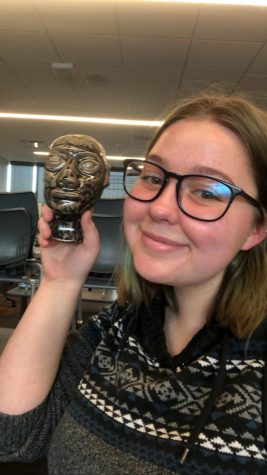The Stonewall Riots
October 4, 2019
October is LGBT history month, yet does anyone really know LGBT history? This year is the 50th anniversary of The Stonewall Riots of 1969, so now is the time to make some noise.
Historical Context
Before we can get to The Stonewall, we have to have a good idea of what being gay was like in the 60’s. 1969 was not a good year for the LGBT community. No years in America been really a good time for the LGBT community at this point. The community faced sodomy laws, the criminalization of “gay behavior”, the inability to be served alcohol, and forced lobotomies and sterilization. We not only had to worry about the law, but also society demonizing homosexuals in all forms of media at the time. “Coming out” was the promise of violence from even the people closest to you. Jobs could be lost if the employee was suspected of being gay. Homophobia ran through the country, wrecking good people with no remorse.

1922 promotion for Speed Langworthy’s song “We Men Must Grow a Mustache”
However the 60’s also had a huge amount of political unrest. Different movements took hold in the media and mind of the people. Anti-Vietnam, Black Power, Civil Rights, and Student Movements are only a few. We saw the break of the nuclear family and the drug revolution. Everything changed and the youth lead it. A constant pattern through history, even now, is youth demanding change to old policy and beliefs.
The Stonewall Inn
The Stonewall Inn in Greenwich Village, New York was the setting for the fateful riots. It was an inn run by the Genovese mob family who provided protection to the LGBT community in exchange for their patronage. We, as Americans, have a romanticized view of the mafia when in actuality it was terrible for the LGBT community. The Stonewall was grungy and dirty. It had no running water; glasses were cleaned by dunking them into buckets of dirty water. The toilets regularly overflowed without the ability to be flushed. The mafia upstairs ran a blackmail mill while patron were served watered down alcohol at incredibly high prices. Servers picked out the patron most likely to respond to exploitation. Younger boys were sold to older wealthier men for a night of “fun” and no one could stop it.
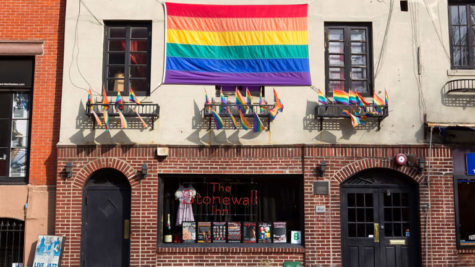
photos of the current stonewall inn look
The police didn’t care about the exploitation of the LGBT community by the mafia. Their pockets were already full with dirty money. They were more likely to arrest them than help them. The Stonewall was raided multiple times a week and patrons were forced to show ID or risk being arrested. Women with less then three pieces of “traditionally feminine” clothing and men in drag were arrested. In extreme cases, female officers were sent to the restrooms to verify the genders of patrons. If found presenting as other than birth sex, they were arrested.
Yet somehow, The Stonewall Inn was filled every night. The LGBT community was stuck between a rock and a hard place and they chose the one that let them be free, even if for only the night.
The Stonewall Riots
On June 28, 1969 at around 1:30 in the morning, police raided The Stonewall without a warning management. The patrons refused to show identification making tensions rise. This resistance was likely sparked by the other movements occurring at this time. Within minutes, protesters flooded the streets and started throwing bricks, stones, and bottles, as well as lighting trash cans on fire, slashing police tires, and calling them pigs or coppers while throwing pennies. A common misconception is that Marsha P Johnson, a transgender woman of color, threw the first brick, however she did not arrive until after the riot has started. It was more likely to have been a homeless youth that claimed the Stonewall as their home. The riots reached new level as a woman (believed to be lesbian LGBT activist Stormé DeLarverie) was beaten over head and thrown into the back of a police vehicle after saying her hand cuffs were too tight.
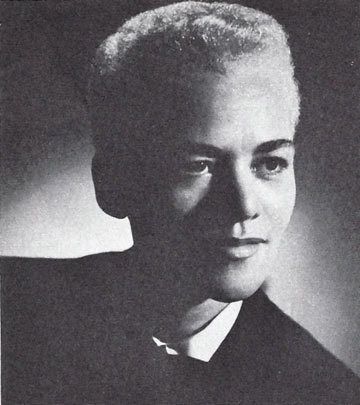
Lesbian activist Storme Delarverie, believed to be the woman thrown into the police van, inciting The Stonewall Riots
The crowd attempted to free woman by overturning the police wagon. The police party was forced to barricade themselves inside The Stonewall Inn. Some rioters used a parking meter as a battering ram to break through the door; others threw beer bottles, trash and other objects, or made impromptu firebombs with bottles, matches and lighter fluid. Sirens warned about arrival of more police officers and the cities riot police. As the officers moved in formation down Christopher Street, protesters outsmarted them by running away, then circling the short blocks of the Village and coming back up behind the officers. The protest ended around 4am and had no casualties.
“It was a relatively peaceful riot…it was a protest of ‘we aren’t going to take this any longer’…’we are going to get rid of the stigma of what it means to be gay.'” -Mr. Jeremiah Murray, ERHS american history teacher
“It was a rebellion, it was an uprising, it was a civil rights disobedience – it wasn’t no damn riot.” -Storme DeLarverie, activist present at Stonewall
Why now?
It is important to note that The Stonewall was not the first LGBT riot, however it was the one that is seen as the turning point for the Gay Liberation Movement. That is largely in part to who was there. Actors, college students, homeless youths, activists, and overall leaders were present at the riots and all of them refused to stop talking about it. The LGBT community was sick of being shoved down and forgotten.
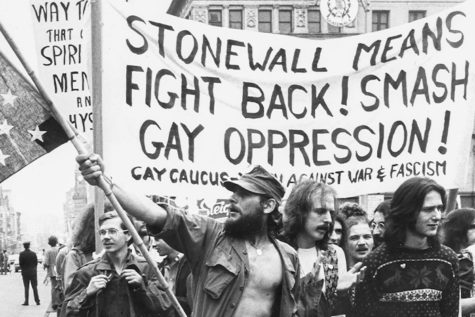
Protesters keeping the spirit of stonewall alive at different protests for LGBT rights
“I was a 17-year-old in Jessup, Georgia, and I remember hearing news of the Gay Liberation Front confronting people who were oppressing gay people, and I saw people standing up and courageously and successfully fighting back. That did change my mentality. You are not in an impossible situation with no hope. You can fight back, and you can possibly win.” –David Carter, LGBT activist and writer
We also attached ourselves to the Civil Rights movement taking place during this time. People started seeing the fight for equality as not only a gender or race problem but a fight for all forms of life, including the LGBT community. Without grabbing onto the the civil rights movement, it is likely to have taken a much longer amount of time to gain the rights everyone should have.
“Everyone should be equal under the law. Lady justice is blind, she should continue to be blind.” -Mr. Jeremiah Murray, ERHS american history teacher
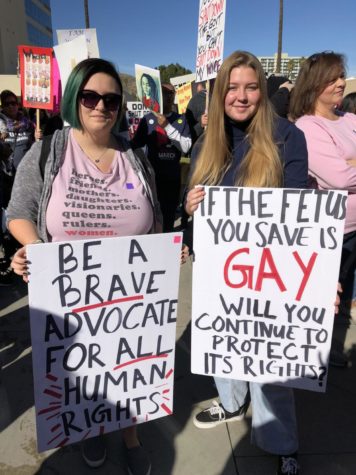
Hazel Lloyd and I at the 2019 Woman’s March
The Aftermath
For three days, up to a thousand protesters returned to riot again. The Stonewall Inn became a hub of activist activity. People returned again and again to share information and plan for what comes next. New organizations like The Gay Liberation Front and The Gay Activist Alliance popped up to meet the demands of the public.
People protested newspapers like the Village Voice and the New York Daily News after using homophobic slang and headlines. Newspapers who remained silent were also protested against for not sharing the events to the public.
Because of this wave of activism, gay liberation movements took root in Australia, Canada, Britain, France, Germany and New Zealand.
“We need to always share with the greater public the progression thats taken place from The Stonewall Riot” -California Assemblymember Sabrina Cervantes
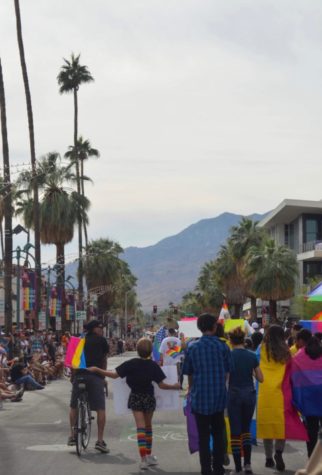
photo taken as GSA marched in the 2018 Palm Springs Pride
What now?
The Gay Liberation Movement is still happening. LGBT children are still kicked from homes like the homeless youth that threw the first brick. Eighteen transgender woman, like Martha P Johnson, have been confirmed murdered in 2019 alone. LGBT citizens face severe judgement and are often rejected from adoption agencies. People are fired from jobs even with protection laws. LGBT inclusive sex education is not taught in schools. Earlier this week, a man plead guilty for beating a young woman he believed to be gay.
We are not finished. We may not be finished for a long time. That is why Stonewall is so important. The spirit of Stonewall keeps up going, pushing, striving, because our jobs are not done. We want equality for all and we have to fight for it.
“It is an honor to be part of one of only seven members … we are the largest LGBTQ caucus in the nation…” -California Assemblymember Sabrina Cervantes
I want to hold the hand of the girl I love without fear. I will remember Stonewall. Will you?
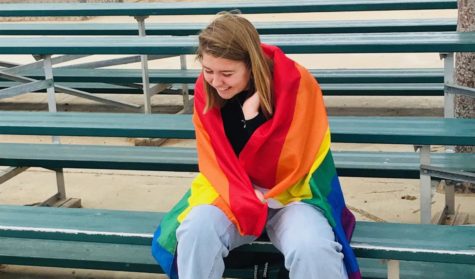
photo of me, Brianne Leber, taken on a GSA bonding trip.

